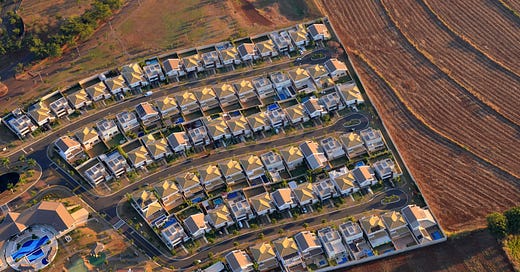Babcock Ranch has it all.
Built on roughly 90,000 acres of untouched Florida wilderness, the village has hardened infrastructure that includes hundreds of thousands of solar panels and state-of-the art wastewater and irrigation systems to ensure residents will never have to worry about blackouts or water shortages. It also holds one of the largest energy storage systems in the country, with ten large batteries. The place has already endured a Category 4 Hurricane, and it did just fine.
Most homes at Babcock start in the $400,000-$500,000 range. If you want to know what it’s like to live there, you can check out the occasional Reddit thread. There appears to be a bit of a MAGA element and a “Stepford feel” that the average resident would probably downplay. As one person said, “the place is in full blown Karen mode,” and “bad things that happen here” like drunk driving, robberies, even rape “are all swept under the rug and buried in the news to continue to make it look like the perfect place to live.” This person goes on to say that the Biden supporters often scare them more than the Trumpers. So just like everything else, you’re buying your way out of one kind of doom and into another.
My point here isn’t to attack any given community. It’s to illustrate a bigger point. We often glamorize the idea of community, offering it up as a floating signifier and an automatic solution to collapse.
It’s not.
To even build a place like Babcock Ranch, you need serious money. In this case, it was a former NFL star who bought the land and developed in according to the best available principles in design, engineering, and sustainability. It happens to be the largest land purchase in the state’s history.
You can find movements all over the world building climate resilient and climate-smart villages with localized food production and architecture designed for a chaotic planet. Some groups, like Climate Safe Villages, even promise to connect you to a network where they’re being built.
I’ve been thinking a lot about the idea of community over the last year. The word comes up all the time when we talk about the future now. It comes with a lot of assumptions and baggage that gets overlooked. As someone who spent a good chunk of their lives trying and failing to build robust communities, I can tell you something that many organizers would agree with:
It’s really hard.





